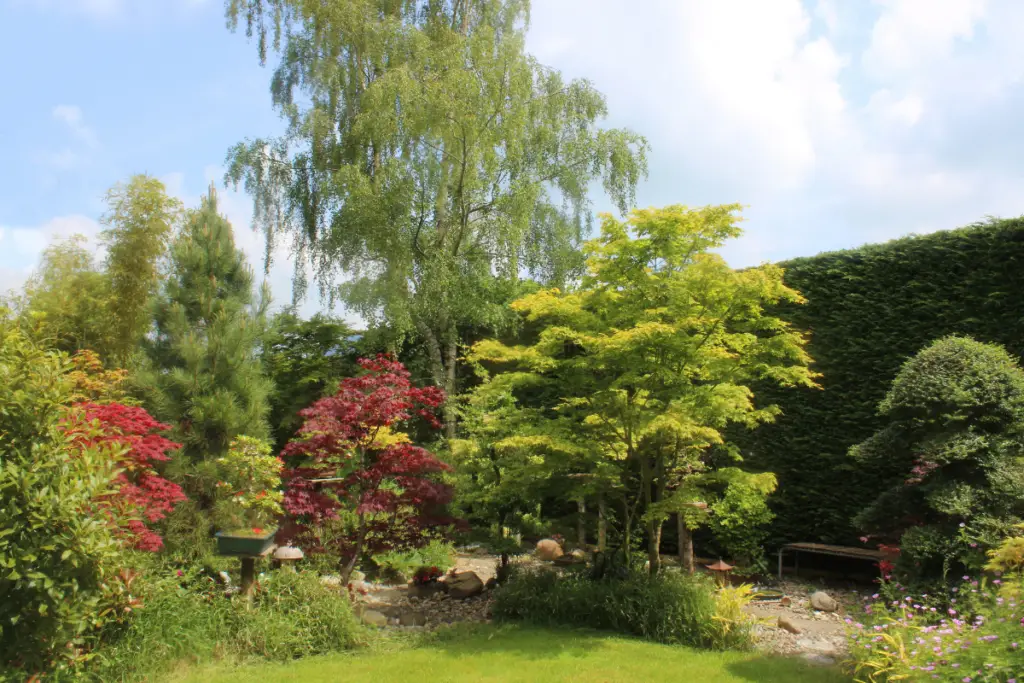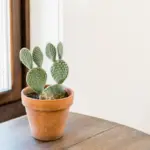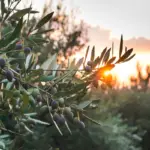When it comes to enhancing the beauty of your lawn, planting trees can be an excellent choice.
Trees not only provide shade and shelter but also add to the aesthetic appeal of your property.
However, selecting the right trees to plant in your lawn can be a daunting task, especially if you’re not familiar with the different types of trees available.
In this article, we’ll discuss the best trees to plant in your lawn and provide some tips to help you make an informed decision.
Choosing the best trees to plant in your lawn requires careful consideration of several factors, including the size of your lawn, the climate in your area, and the purpose of planting the trees.
For instance, if you’re looking to add privacy to your lawn, evergreen trees such as the Green Giant Arborvitae or the Leyland Cypress can be an excellent choice.
These fast-growing trees can reach up to 60 feet in height and provide year-round privacy.
On the other hand, if you’re looking to add color to your lawn, flowering trees such as the Dogwood or the Magnolia can be a great option.
These trees produce beautiful blooms in various colors and can add a touch of elegance to your lawn.
Additionally, fruit trees such as the Apple or the Cherry can provide both beauty and functionality, as they produce delicious fruits that you can enjoy throughout the year.

Table of Contents
Understanding Your Lawn
Before selecting the best trees to plant in your lawn, it is important to understand the characteristics of your lawn.
This includes the soil type, drainage, sun exposure, and climate.
Soil Type
The soil type of your lawn plays a crucial role in determining which trees will thrive. Some trees prefer well-drained soil, while others prefer moist soil.
It is important to test your soil to determine its pH level and nutrient content. This will help you select trees that are best suited for your soil type.
Drainage
Good drainage is important for the health of your trees. Trees that are planted in areas with poor drainage may suffer from root rot and other diseases.
If your lawn has poor drainage, consider planting trees that are tolerant of wet soil conditions.
Sun Exposure
The amount of sun exposure your lawn receives will also affect the growth of your trees. Some trees prefer full sun, while others prefer partial shade.
It is important to select trees that are suited to the amount of sun exposure your lawn receives.
Climate
The climate of your area will also affect the growth of your trees. Some trees are better suited for hot, dry climates, while others prefer cooler, wetter climates.
It is important to select trees that are adapted to the climate of your area.
By understanding the characteristics of your lawn, you can select trees that will thrive and enhance the beauty of your landscape.
Climate Considerations
When choosing trees to plant in your lawn, it’s important to consider the climate of your area.
Trees that are native to your region will be better adapted to the local climate, and will require less maintenance and care.
Different trees have different temperature and moisture requirements, so it’s important to choose trees that are well-suited to the climate of your area.
For example, if you live in a hot and dry climate, you may want to consider planting trees that are drought-tolerant, such as the Desert Willow or the Palo Verde.
On the other hand, if you live in a cooler and wetter climate, you may want to consider trees that are more suited to those conditions, such as the Red Maple or the White Spruce.
It’s also important to consider the hardiness zone of your area. Hardiness zones are based on the average annual minimum temperature in a given area, and can help you determine which trees are most likely to thrive in your climate.
The United States Department of Agriculture (USDA) has developed a hardiness zone map that can help you determine which zone you live in.
In addition to temperature and moisture requirements, it’s important to consider other factors that can affect the growth and health of your trees, such as soil type, sun exposure, and wind patterns.
By taking climate considerations into account when choosing trees for your lawn, you can ensure that your trees will thrive and provide beauty and shade for years to come.
Soil Type and Tree Selection
When selecting trees for your lawn, it is important to consider the type of soil you have.
Different trees thrive in different soil types, so it is crucial to choose trees that are well-suited to the soil in your area.
Acidic Soil Trees
If you have acidic soil, which is soil with a pH level below 7, there are several tree species that will thrive in your lawn.
Some examples of trees that do well in acidic soil include:
- Red Maple (Acer rubrum)
- Dogwood (Cornus florida)
- Rhododendron (Rhododendron spp.)
- Blueberry (Vaccinium spp.)
These trees are adapted to acidic soil and will grow well without requiring additional soil amendments.
Alkaline Soil Trees
If you have alkaline soil, which is soil with a pH level above 7, there are also several tree species that will do well in your lawn.
Some examples of trees that thrive in alkaline soil include:
- Honeylocust (Gleditsia triacanthos)
- Hackberry (Celtis occidentalis)
- Bur Oak (Quercus macrocarpa)
- Catalpa (Catalpa spp.)
These trees are adapted to alkaline soil and will grow well without requiring additional soil amendments.
It is important to note that while some trees are adapted to specific soil types, many trees are adaptable and can grow in a range of soil types.
It is always a good idea to test your soil and consult with a local nursery or arborist to determine the best trees for your specific soil type.
Size and Growth Rate
When selecting trees to plant in your lawn, it’s important to consider their size and growth rate.
This will help you determine how much space you need to allocate for them and how quickly they will grow.
Small Trees
Small trees are a great option for those who have limited space in their lawn.
They typically grow up to 30 feet tall and have a slower growth rate, which means they require less maintenance.
Some popular small trees include:
- Dogwood (Cornus florida): This tree has beautiful pink or white flowers in the spring and colorful foliage in the fall.
- Redbud (Cercis canadensis): This tree has stunning pink or purple flowers in the spring and heart-shaped leaves.
- Japanese Maple (Acer palmatum): This tree has delicate leaves that come in a variety of colors, including red, orange, and green.
Medium Trees
Medium trees are a good choice for those who have a bit more space in their lawn.
They typically grow up to 60 feet tall and have a moderate growth rate.
Some popular medium trees include:
- Crabapple (Malus): This tree has beautiful flowers in the spring and colorful fruit in the fall.
- Magnolia (Magnolia): This tree has large, fragrant flowers in the spring and glossy leaves.
- Eastern Red Cedar (Juniperus virginiana): This tree has blue berries and evergreen foliage.
Large Trees
Large trees are ideal for those who have plenty of space in their lawn.
They typically grow over 60 feet tall and have a fast growth rate.
Some popular large trees include:
- Oak (Quercus): This tree is known for its strong, sturdy branches and acorns.
- American Sycamore (Platanus occidentalis): This tree has beautiful bark that peels away to reveal a patchwork of colors.
- Sweetgum (Liquidambar styraciflua): This tree has star-shaped leaves that turn vibrant colors in the fall.
When selecting trees for your lawn, it’s important to consider their size and growth rate to ensure they fit within your space and maintenance requirements.
Aesthetic Appeal
When it comes to choosing trees for aesthetic appeal, there are a few key factors to consider.
First, consider the size and shape of the tree. Some trees are tall and narrow, while others are shorter and wider.
Think about the overall shape of your lawn and how the tree will fit into the landscape.
Another important factor is the color of the tree’s leaves. Some trees have bright green leaves, while others have darker or variegated leaves.
Consider how the tree’s leaves will complement the other plants in your yard.
Additionally, think about the tree’s bark and any flowers or fruit it may produce. Some trees have interesting bark patterns, while others produce showy flowers or colorful fruit.
These features can add visual interest to your lawn and make it more visually appealing.
Some trees that are known for their aesthetic appeal include:
- Serviceberry: This tree produces showy white flowers in the spring and colorful berries in the summer.
- Dogwood: With its pink or white flowers and striking red bark, the dogwood is a popular choice for adding color to a yard.
- Weeping Cherry: This tree’s graceful, drooping branches and delicate pink flowers make it a beautiful addition to any lawn.
- Sugar Maple: With its bright green leaves in the summer and vibrant red and orange foliage in the fall, the sugar maple is a stunning tree that adds color to any landscape.
- Thuja ‘Green Giant’ Arborvitae: These tall, narrow trees are perfect for adding height and texture to a lawn. They also provide year-round greenery, making them a popular choice for privacy screens.
When choosing trees for aesthetic appeal, it’s important to keep in mind the overall look and feel of your lawn.
By selecting trees that complement your existing landscape and add visual interest, you can create a beautiful and inviting outdoor space.
Maintenance and Care
Proper maintenance and care are essential to ensure that your trees remain healthy and thrive in your lawn.
Here are some tips for watering, pruning, and pest control to keep your trees in good condition.
Watering
Watering your trees is crucial, especially during the first few years after planting. Young trees require more frequent watering than mature ones.
The amount of water required depends on various factors such as the tree species, soil type, and weather conditions.
It is recommended to water your trees deeply and infrequently. This means giving them a thorough soaking once a week rather than frequent shallow watering.
The water should penetrate the soil to a depth of at least 6 inches.
Pruning
Pruning is necessary to remove dead or diseased branches, promote healthy growth, and maintain the tree’s shape and size.
It is best to prune your trees during the dormant season, which is usually in late winter or early spring.
When pruning, use sharp and clean tools to make clean cuts. Avoid cutting too close to the trunk or leaving stubs, as this can lead to decay and disease.
If you are not sure how to prune your trees, consider hiring a professional arborist.
Pest Control
Pests can damage your trees and affect their growth and health. Common pests that can infest trees include aphids, scale insects, and spider mites.
To prevent pest infestations, keep your trees healthy by providing them with proper nutrients, water, and sunlight.
If you notice signs of pest infestation, such as discolored leaves or webs, take action immediately. You can use insecticidal soap or horticultural oil to control pests.
Alternatively, you can hire a professional pest control company to treat your trees.
By following these maintenance and care tips, you can ensure that your trees remain healthy and beautiful in your lawn.
Environmental Impact
Planting trees in your lawn can have a significant positive impact on the environment. Trees absorb carbon dioxide, which is a greenhouse gas that contributes to climate change.
They also release oxygen into the atmosphere, which is essential for humans and animals to breathe.
Trees can also provide shade, which can help reduce the amount of energy needed to cool your home in the summer.
When choosing trees to plant in your lawn, it’s important to consider their environmental impact. Some trees are more beneficial to the environment than others.
Native trees are generally the best choice, as they are adapted to the local climate and soil conditions. They also provide habitat for local wildlife.
Here are some trees that are known for their positive environmental impact:
- Oak Trees: Oak trees are native to many parts of the United States and are known for their longevity and ability to sequester carbon. They also provide habitat for a wide range of wildlife, including birds, insects, and mammals.
- Maple Trees: Maple trees are also native to many parts of the United States and are known for their beautiful fall foliage. They are also excellent carbon sinks and provide habitat for wildlife.
- Dogwood Trees: Dogwood trees are native to the eastern United States and are known for their beautiful spring flowers. They are also important sources of food for birds and other wildlife.
- Pine Trees: Pine trees are excellent carbon sinks and are often used in reforestation efforts. They also provide habitat for wildlife, including birds and small mammals.
When planting trees in your lawn, it’s important to consider their size and placement.
Large trees should be planted away from buildings and power lines to avoid potential damage.
It’s also important to consider the tree’s water and nutrient needs and to provide adequate care to ensure their survival.
Top Tree Recommendations
When it comes to choosing the best trees to plant in your lawn, there are many factors to consider.
Some of the most important considerations include the climate, soil type, and available space.
Here are some top tree recommendations that are well-suited for most lawns.
Deciduous Trees
Deciduous trees are a great choice for homeowners who want to add some color to their lawn.
These trees lose their leaves in the fall, which can create a beautiful display of colors.
Some of the best deciduous trees to plant in your lawn include:
- Maple Trees: Maple trees are a popular choice for homeowners because of their vibrant colors and unique shapes. They are also relatively low-maintenance and can grow in a variety of soil types.
- Dogwood Trees: Dogwood trees are known for their beautiful flowers and striking bark. They are also relatively small, making them a good choice for smaller lawns.
- Oak Trees: Oak trees are a classic choice for homeowners who want to add some shade to their lawn. They are also very sturdy and can withstand harsh weather conditions.
Evergreen Trees
Evergreen trees are a great choice for homeowners who want to add some greenery to their lawn all year round.
These trees keep their leaves year-round, which can provide some much-needed privacy and shade.
Some of the best evergreen trees to plant in your lawn include:
- Arborvitae Trees: Arborvitae trees are a popular choice for homeowners who want to create a natural fence around their property. They are also relatively low-maintenance and can grow in a variety of soil types.
- Spruce Trees: Spruce trees are known for their unique shape and vibrant colors. They are also very hardy and can withstand harsh weather conditions.
- Pine Trees: Pine trees are a classic choice for homeowners who want to add some height to their lawn. They are also relatively low-maintenance and can grow in a variety of soil types.
Overall, choosing the right trees to plant in your lawn requires some careful consideration.
By taking into account the climate, soil type, and available space, homeowners can choose trees that will thrive and add beauty to their lawn for years to come.
Conclusion
Choosing the best trees to plant in your lawn is an important decision that can have a significant impact on the look and feel of your outdoor space.
By considering factors such as size, growth rate, and maintenance requirements, homeowners can select trees that will thrive in their specific climate and provide long-lasting beauty and benefits.
When it comes to selecting trees for your lawn, it’s important to consider the overall aesthetic you’re trying to achieve.
Trees with colorful foliage, such as the Katsura tree, can add a pop of color to your landscape, while evergreens like the Green Giant arborvitae can provide year-round privacy and screening.
Homeowners should also consider the size and growth rate of potential trees, as well as their maintenance requirements.
Trees like the Thornless Honeylocust and Crape Myrtle are low-maintenance options that are well-suited for many different types of lawns.
Ultimately, the best trees for your lawn will depend on a variety of factors, including your personal preferences, the specific climate and soil conditions in your area, and the amount of time and effort you’re willing to devote to maintenance.
By doing your research and consulting with a professional landscaper or arborist, you can select the trees that will best meet your needs and enhance the beauty and functionality of your outdoor space.
- How to Build a Planter Box for Bamboo: A Step-by-Step Guide

- Can Robotic Lawnmowers Handle Steep Slopes?

- Do You Need a Specific Lawn for a Robotic Lawnmower? Expert Advice

- Are Robotic Lawnmowers Safe for Pets and Children? Safety Features of Robotic Lawnmowers

- Why Use Robotic Lawnmowers? Advantages of Using a Robotic Lawnmower

- Is the GARDENA SILENO City 300 Cordless or Corded? A Clear Answer














